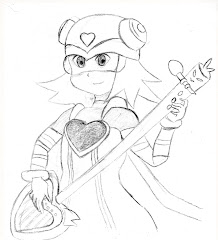Persistence of vision was experimented with the Thaumatrope, tests
showed that looking at two different images quickly in succession would cause
the person looking at the images to see them merging together.
Monday, 3 June 2013
Wednesday, 6 March 2013
Ray Harryhausen
 Ray
Harryhausen was born in 1920, in Los Angeles. Although born in America he is
still considered to be British. At the age of 13 he saw the movie King Kong,
made by Willis O’ Brien. Ray Harryhausen was inspired by this film and decided
that it was what he wanted to do in life, he eventually became Willis O’
Brien’s assistant.
Ray
Harryhausen was born in 1920, in Los Angeles. Although born in America he is
still considered to be British. At the age of 13 he saw the movie King Kong,
made by Willis O’ Brien. Ray Harryhausen was inspired by this film and decided
that it was what he wanted to do in life, he eventually became Willis O’
Brien’s assistant.
To improve his drawings he put himself through art
school, and for much of his later work he used a technique known as Aerial
Perspective (objects in the background are faded and objects in the foreground
where darker) this made it possible to show various layers in a drawing. He made very detailed and complicated storyboards for all of his planning. For
each of the movies he made he did a detailed storyboard first, then he would do initial concept design and then he would build the models so that they were fully articulated. Aerial
Perspective helped show where the characters in the scene would go. The movies
Ray made where ‘creature features’, as this was the most popular type of film,
and so it was likely that more people would see the film.
 The characters that Ray made for his films where made of
plasticine with wire frames to help them to keep there shape. When filming Ray
didn’t use a green screen for his work, but he did use perspective so all his
models where the same size but some looked bigger as brought them closer to the
camera.
The characters that Ray made for his films where made of
plasticine with wire frames to help them to keep there shape. When filming Ray
didn’t use a green screen for his work, but he did use perspective so all his
models where the same size but some looked bigger as brought them closer to the
camera.10) Stop frame animation
This is a fairly old form of animation that involves taking
several photos that have something slightly changed in each picture, this is
common with clay as people can mould the clay into different positions that can
mimic movement. There are 24 frames to a second of film and therefore each stop frame animation is made up of still images which are projected at that frame rate. Examples are Jason and the Argonauts by Harryhausen and Pes.
2). Magic Lantern
The early magic lanterns were made of wood, this was a fire hazard
as the light source used was a small fire inside the lantern. The magic lantern
was the first form of projection; it was projected on walls using slides put in
front of the lens. Sometimes more than one slide was put in front of the lens
to give the impression of transformation (man into werewolf).
1). Cave drawings
 Cave
drawings were the first evidence of people, along with this they are also the
first images done by people. They were used as a marker by cave men to say, “I
was here” (like modern graffiti where people write there names on walls).
Silhouette images of hands, done by cave men, were also used similar methods
used today. Cave men would spray the paint from their mouths to get the shape
of the hand, kind of like spay paints and templates used today.
Cave
drawings were the first evidence of people, along with this they are also the
first images done by people. They were used as a marker by cave men to say, “I
was here” (like modern graffiti where people write there names on walls).
Silhouette images of hands, done by cave men, were also used similar methods
used today. Cave men would spray the paint from their mouths to get the shape
of the hand, kind of like spay paints and templates used today.
Wednesday, 27 February 2013
9) George Melies
George Melies experimented with double exposure, this was early
editing that allowed him to hide parts and make them appear in other places by
going back over it again later to get things that were not on the first
exposure, for example he could create two of him on the same slide.
8) Hand cranked movie cameras
These
hand cranked movie cameras were helpful as they could be used as both a camera
and a projector. When the film used to capture the images was finished then the
film could be developed into something that could be used for the projector.
These projectors no longer needed slides but used film running behind the lens
and in front of the light.
Subscribe to:
Posts (Atom)

